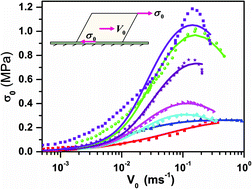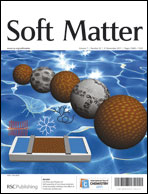Steady dynamic friction at elastomer–hard solid interface: A model based on population balance of bonds
Abstract
We present a model for the steady dynamic friction of a block of an elastomer, sliding steadily on a hard surface. The model uses population balance of the bonds between the hard surface and the polymer chains of the elastomer to estimate the force of friction. Although the basic premises of the present model are the same as those of the Schallamach model for dynamic friction (1963), the present formulation is a clearer representation of the phenomena involved. Moreover, the model is not based on the ergodic hypothesis and is therefore more versatile. It also allows us to correct the error in the expression for the force of friction in the Schallamach model. The present model exhibits the same qualitative trends as the Schallamach model. However, there are significant quantitative differences between the two models. We also show that our expression for the force of friction is equivalent to that obtained by the Chernyak and Leonov (1986) model, which is based on the ergodic hypothesis. The model is further modified to account for both the non-Hookean extension of the bonded chains and the viscous retardation effect. The model is validated using the experimental data of Vorvolakos and Chaudhury (2003) on sliding of crosslinked PDMS solid on


 Please wait while we load your content...
Please wait while we load your content...